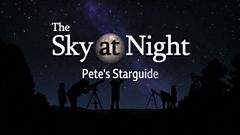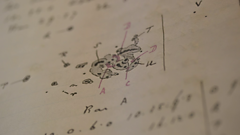
Death Star
An examination of how damaging a coronal mass ejection could be and how two new satellites that will travel closer to the sun than ever before can better prepare us.
One evening in early September 1859, a spectacular blood-red aurora borealis appeared across America. Earlier that same day, in a leafy garden in the UK, a gentleman astronomer had noted a 'white light flare' on the sun's surface.
The two events were linked; it's now known that the flare caused the aurora. The flare was a particularly violent eruption from the sun's surface known as a CME, a coronal mass ejection. Back then, it was considered an astronomical curiosity. But when it happens again, it will be a different story. For the modern, technological world such a violent solar phenomenon could be devastating. This episode examines just how damaging a CME could be and how astronomers, using two new satellites that will travel closer to the sun than ever before, can better prepare us for its impact.
Last on
More episodes
Previous
Next
Clips
-
![]()
Starguide: August 2018
Duration: 03:40
-
![]()
Solar Weather Forecast
Duration: 01:09
-
![]()
Magnetometer
Duration: 03:26
-
![]()
The Carrington Event
Duration: 02:27
Music Played
Timings (where shown) are from the start of the programme in hours and minutes
-
![]() 00:02
00:02Jean Sibelius
Pelleas and Melisande: At The Castle Gate
Performer: Royal Philharmonic Orchestra. Conductor: Thomas Beecham.
Credits
| Role | Contributor |
|---|---|
| Presenter | Chris Lintott |
| Presenter | Maggie Aderin-Pocock |
| Presenter | Pete Lawrence |
| Series Producer | Simon Winchcombe |
| Executive Producer | Jonathan Renouf |
Join our photo group
Share images, inspiration and tips with fellow photographers






